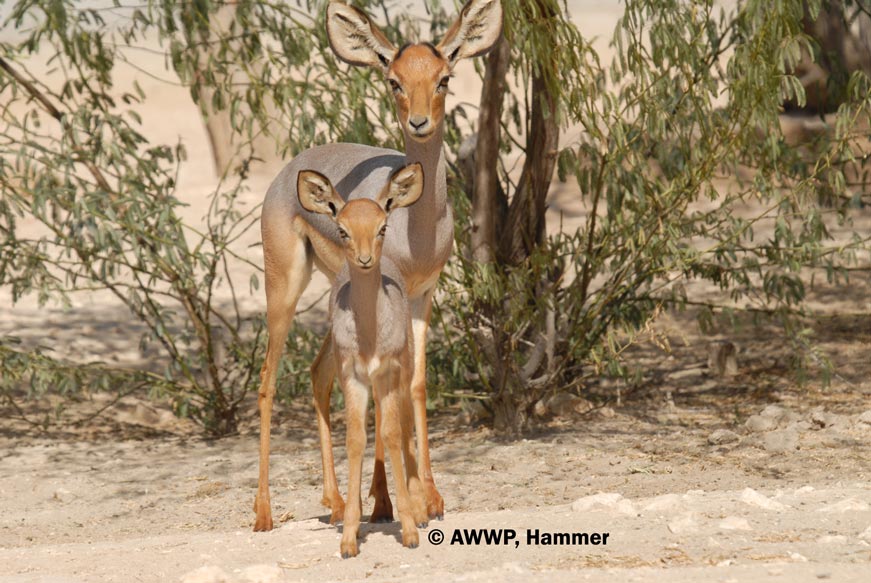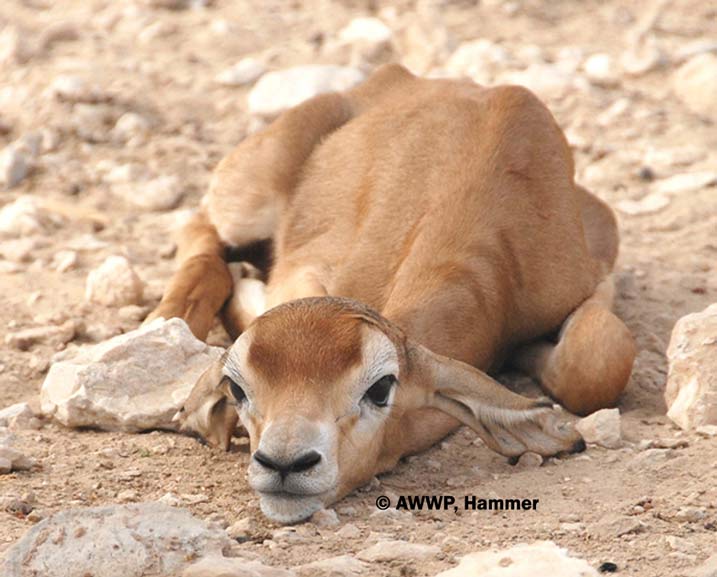Arabian Goitered Gazelle / Gazella subgutturosa marica
 |
 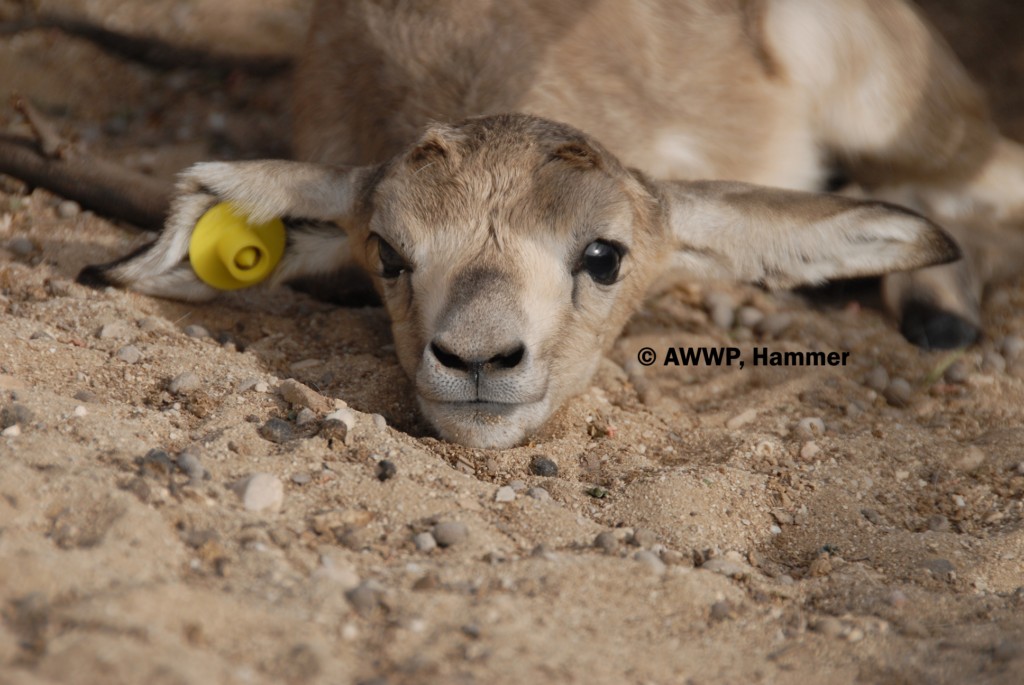 |
|
|
The Arabian goitered gazelle or “Rheem” is the only native gazelle species to Qatar. It inhabits sand deserts, limestone plateaus and gravel plains within the Arabian Peninsula, Jordan and Iraq. The “Rheem” is very light coloured gazelle; the head of adults is almost entirely white. Both sexes bear horns. The horns of the males are strongly ringed and curved backwards. During rut the larynx of the males bulges outwards, resembling a goiter. Also during rut the bucks show a distinctive swelling of their pre-orbital glands. In most parts of its range they undergo seasonal movements. The IUCN classifies the Arabian goitered gazelle as VULNERABLE.
Arabian Mountain Gazelle / Gazella gazella
 |
  |
|
|
The Idmi gazelle inhabits a range of desert and semi-desert habitats. They often occur in steep terrain, but avoid rocky areas. Their original distribution is Israel; Oman; Saudi Arabia; United Arab Emirates; Yemen. Idmis have been introduced into Iran. Once widespread all over the Arabian Peninsula, the Idmi is now declining due to illegal hunting and live capture. The IUCN classifies them as VULNERABLE. There are 5 subspecies described, all of them differ in size and coloration as well as the shape of the horns.
Arabian Oryx / Oryx leucoryx
 |
The Arabian Oryx is the largest desert antelope and one of the most distinctive antelopes at all. Once widespread all over the Arabian Peninsula they were driven close to extinction in the late 1950’s due to over hunting. An international initiative saved a breeding stock in captivity.
AWWP started breeding this species in 2003. Our population consists of EEP animals, from the Zoo’s of Berlin, Rotterdam and Lisbon. |
 The Beira Antelope inhabits mountainous areas and occurs only at the Horn of Africa, where it lives in small family groups. Competition with livestock for food and water resources, droughts and urbanization are the main threats to this very distinct species.
The Beira Antelope inhabits mountainous areas and occurs only at the Horn of Africa, where it lives in small family groups. Competition with livestock for food and water resources, droughts and urbanization are the main threats to this very distinct species.
The Beira Antelope is listed as vulnerable by the IUCN. The only captive breeding group is found at Al Wabra Wildlife Preservation. The successful breeding of this species has started in 2000 with 8 founder animals. The number of Beira Antelopes at AWWP reached its peak with 58 in 2005.
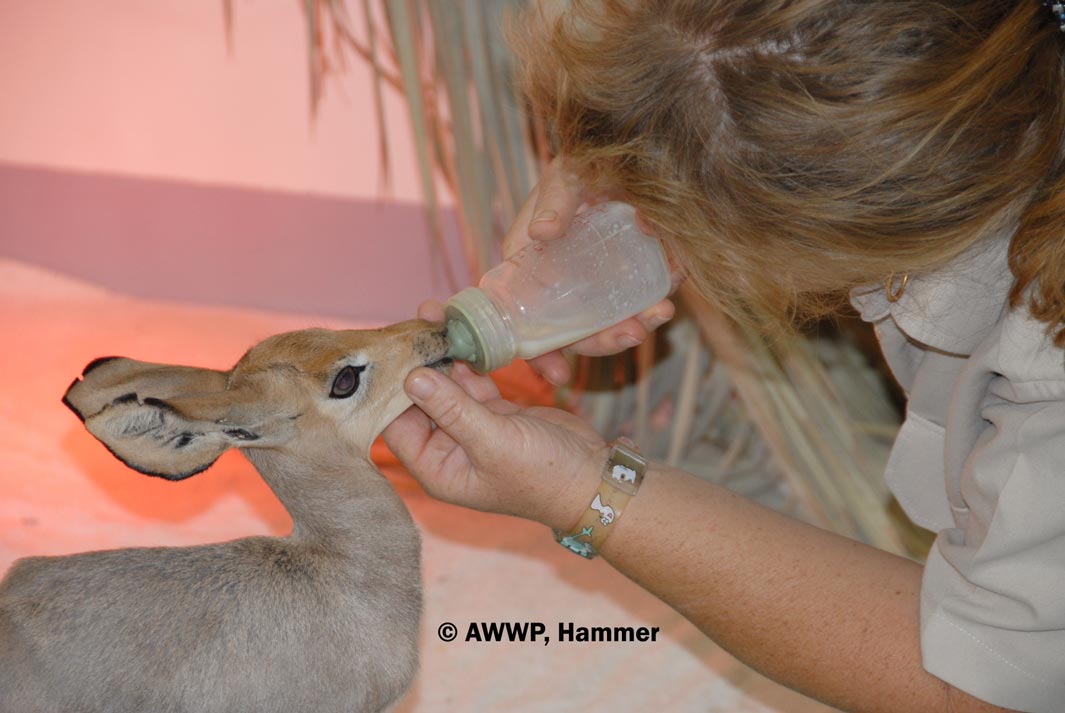
Beisa Oryx / Oryx beisa
  |
 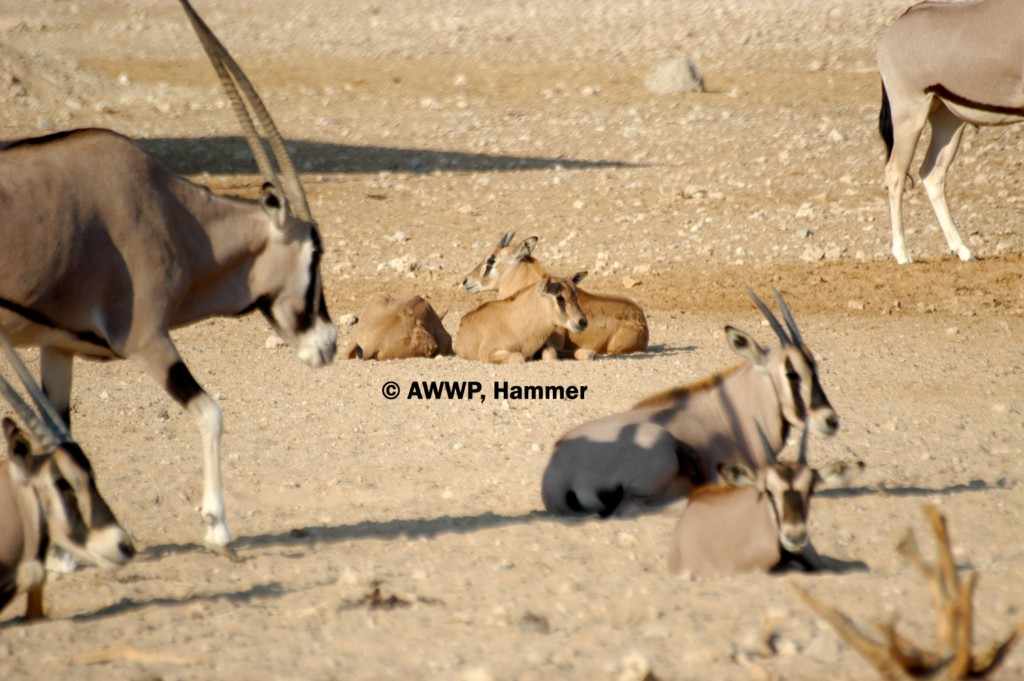 |
|
|
Beisa Oryx or East African Oryx live in semi-desert and steppes of Eastern Africa. They gather in herds of five to forty animals often with females moving at the front and large male guarding from the rear. The beisa oryx has a number of physiological adaptations which allow it to conserve water. Under conditions of extreme heat and low water, the oryx can raise its body temperature to 46.5o C. Up to this temperature, there is a normal flow of heat from the body to the environment without a loss of water. Only after this point does it start to perspire. The beisa is classified as LOWER RISK (conservation dependant). AWWP breeds this species regularly for many years.
Chinkara Gazelle / Gazella bennettii
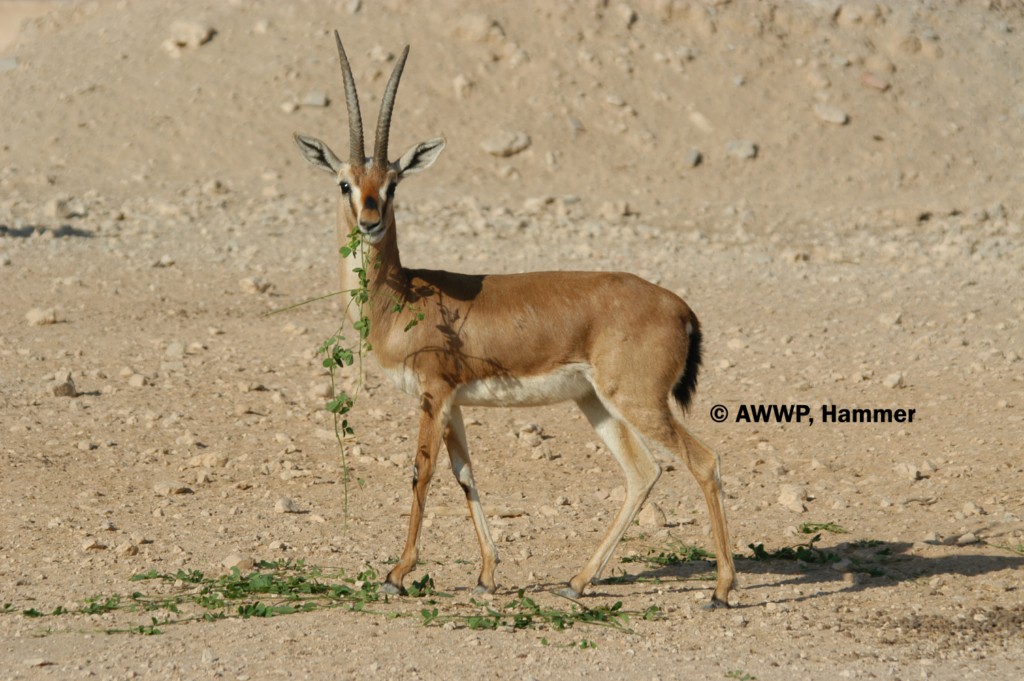 |
  |
|
|
The range of the Indian gazelle or chinkara covers much of western and central India, extending through Pakistan, south-western Afghanistan into north-central Iran. It is a very adaptable animal. They can be found in the salt range in Pakistan Punjab and up to levels of about 1200 m. It exists in extensive sand dune areas, down to the sea level as well as in rocky plateaus and hilly regions of up to 1500 m elevation. Chinkara live in small herds of 10 to 20 individuals. They are either found as a group of comprising of a single buck, one or more does and the fawns, or as solitary bucks, and a group of all male individuals. The IUCN classifies the chinkara gazelle as LEAST CONCERN.
Dama Gazelles / Gazella dama ruficollis
In February 2003, AWWP received 2 male and 2 female Dama Gazelles (Gazella dama ruficollis) from three different North American zoological facilities. The first offspring was born in August 2003. Since then birth takes place regularly. This is an important contribution to the survival of this critically endangered North African desert gazelle. The main threat of the largest representative of the genus Gazella is hunting.
Dorcas Gazelle / Gazella dorcas
 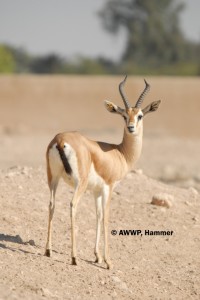 |
 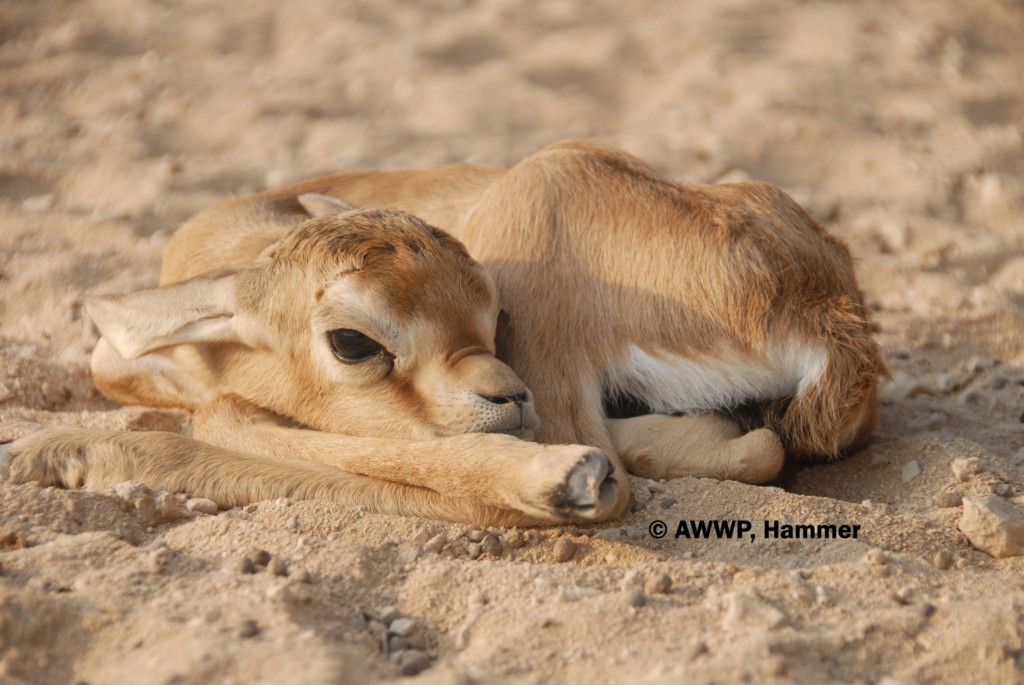 |
|
|
Several subspecies of the Genus dorcas have been described, based on phenotypic variation, but the validity of these subspecies awaits further investigation using molecular techniques. Dorcas Gazelles survive on vegetation in grassland, steppe, wadis, mountain desert and in semi-desert climates. The species ranges throughout Africa, Arabia and into Iran and northern India. When conditions are harsh, dorcas Gazelles live in pairs, but when conditions are more favorable they join together in family herds with one adult male, several females and young. The IUCN classifies the dorcas gazelle as
Erlangers Gazelle / Gazella erlangeri
 |
  |
|
|
There are still discussions amongst scientists whether the “Erlanger’s “is a distinct species or a subspecies of the Gazella gazella group. It is a rather small and dark and short legged gazelle with a stout body. It inhabits the desert hills in a relatively small area in South East Yemen. There is no information on wild populations since 1906. AWWP and the King Khalid Wildlife Research Center in Rijad (Saudi Arabia) are the only known facilities that keep this species. Measures to exchange animals and starting a breeding program have been already undertaken. The IUCN classifies the Erlanger’s gazelle as VULNERABLE.
 The Beira Antelope inhabits mountainous areas and occurs only at the Horn of Africa, where it lives in small family groups. Competition with livestock for food and water resources, droughts and urbanization are the main threats to this very distinct species.
The Beira Antelope inhabits mountainous areas and occurs only at the Horn of Africa, where it lives in small family groups. Competition with livestock for food and water resources, droughts and urbanization are the main threats to this very distinct species.
